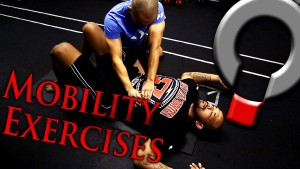As a sports chiropractor in New York City, I have the opportunity to work with many athletes that participate in various forms of martial arts. With the increasing popularity of mixed martial arts (MMA), I encounter more and more questions regarding ways to improve hip flexibility for faster and more powerful kicks.
If you find yourself stretching frequently, yet not becoming more flexible, the following information may interest you. Mobility issues or lack of flexibility at the hips, may be related to a lack of stability in that area and/or weakness in your core. Mobility issues tend to respond to stretching or myofascial work (massage, foam rolling, etc); however stability problems need to be trained with specific corrective exercises.
There are some that feel that strengthening your hips may cause them to be less flexible; not always the case. A healthy balance of stretching, foam rolling and strengthening may help you to achieve better flexibility. Here are three tips to help your reach your goals:
1. Foam Roll Regularly: These warm-up exercises can be performed before training, and even after your workout. All you need is some floor space, a high-density foam roller, and/or a Stick or Tiger Tail Roller to get started.
Here are some examples of techniques used to foam roll your legs:
IT Band Foam Rolling
Gluteal Region Foam Rolling
Calves Stick Rolling
2. Hip Strengthening Exercises:
A. Clam Shell Exercise: Used to improve gluteus medius strength. One of gluteus medius’ most is important functions is to stabilize the pelvis when you are standing on one leg. This muscle is very active, especially on the supporting leg, during kicks.
B. Lateral Band Walks: Another great exercise to improve hip strength. In this video, you will see a demonstration of the exercise performed with a loop band around the thigh region. You can also perform this exercise with the loop at your ankles.
C. Plank Exercise: Planking is a great core strengthening exercise. Core strength is very important when kicking. It will help protect your spine, open up your hips, and help decrease some unwanted movement compensations which can lead to stability and mobility issues. Here is a video demonstrating different levels of plank progression:
3. Hydrate: Water is very important in keeping muscles and fascia supple and moveable. It helps us perform optimally. Dehydration can affect your performance and flexibility (amongst other negative side-effects) by prohibiting the natural sliding mechanism of soft-tissue. Stay hydrated throughout the day by drinking at least your 8 glasses of water a day, and increase your intake on days your train.
Kicking Demonstration
About the Author: Dr. Paul M. Salinas is a Certified Chiropractic Sports Physician. He is the director of Park Avenue Spine (www.parkavenuespine.com), which is located in New York City. He specializes in the treatment and rehabilitation of sports-related injuries, and treats athletes ranging from the amateur to professional levels in a variety of sports.
****Warning: Always consult your physician before using this or any other exercise program. The instruction or advices presented are in no way a substitute for medical advice or counseling. The creators, producers and distributors of this program disclaim any liability in connection with this exercise or the advice herein.
Originally posted on October 10, 2013 @ 4:57 pm
